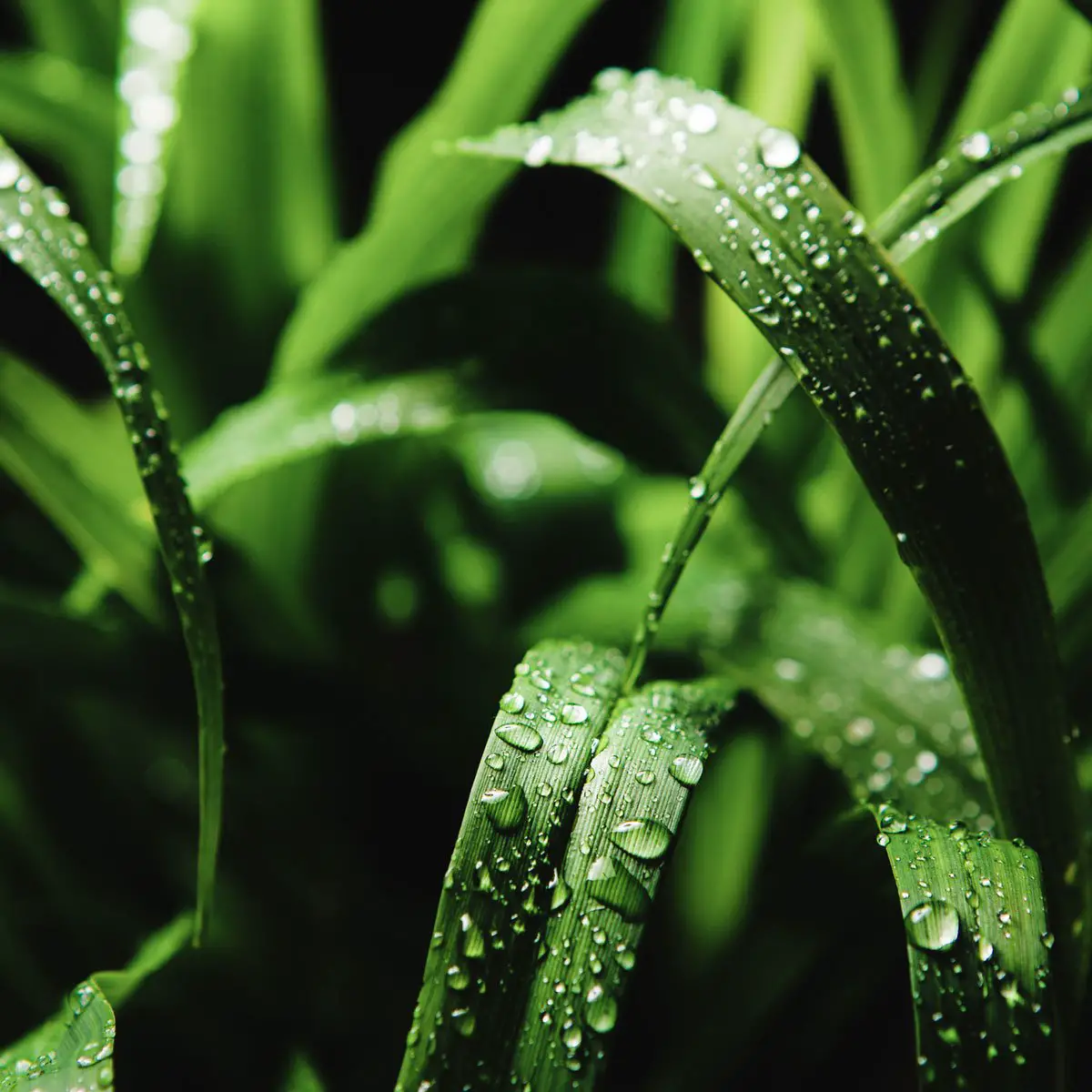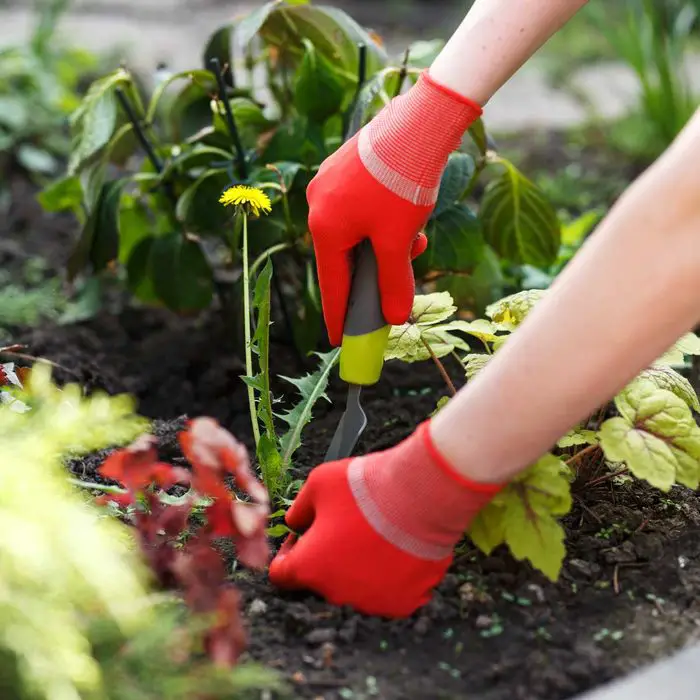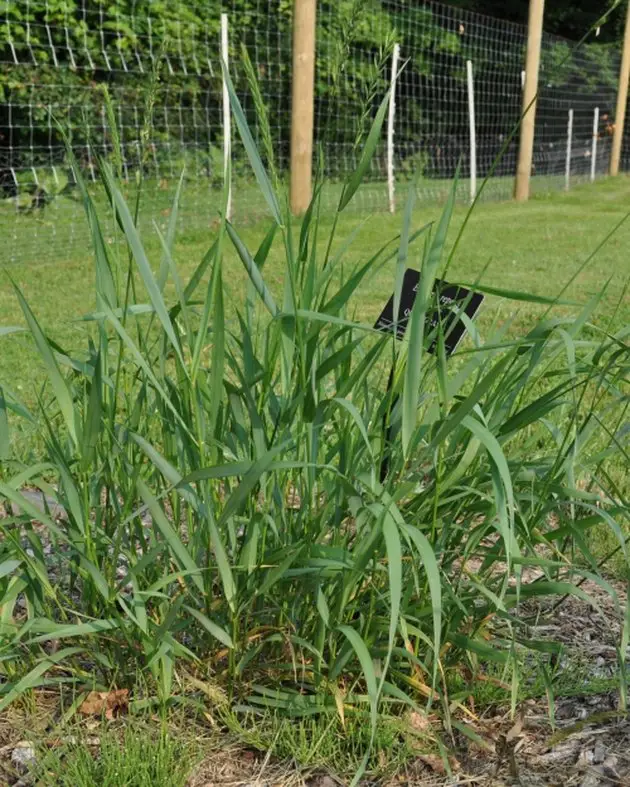Is It Safe To Apply Vinegar On Your Lawn
The major downside of this brew of vinegar and orange oil is that it is not discriminative. It kills anything in its path. Therefore, you should be really careful when applying it to your lawn lest the entire lawn dries up.
It kills plants, flowers, and grass just as effectively as it kills weeds. The best strategy to keep your flowers, plants, and grasses safe is by avoiding the use of vinegar weed killer on windy days. You can also use a paintbrush as an alternative for spray can to selectively eliminate quackgrass amidst other grasses in the lawn.
You May Like: Violet Killer For Lawns
Threats: Why Is Quackgrass A Noxious Weed
Quackgrass has creeping rhizomes that grow at a fast rate. If left uncontrolled, the rhizomes can spread at a rate of ten feet a year, making this weed highly invasive.
Perfect example of why quackgrass is so difficult to control.
Kevin W. Frank May 4, 2013
And that is not all. As it spreads, it weeds out native species in the land. Suppose it establishes in agricultural land, it can reduce the yield from the field as well as contaminate the crops. The farmer would suffer devastating losses accruing from this.
As the grass takes hold, it becomes more competitive. Where it is in high numbers, it can wipe out up to 80% of the crop yield, where potatoes are in play.
For corn yields, a farmer can expect losses amounting to 35% of the total yield. Depending on the crops ability to resist the invasion, the effects vary.
Take potatoes as an example. Studies show that rhizomes are not only capable of penetrating the hard soils that are characteristic of this crop- but they also grow into the tubers. How much damage would that cause?
And the spread of this grass is quite easy as it takes place during harvesting and cultivation. A fragment on machinery is enough to wreak havoc on crop fields. That is why this grass ranks as a noxious weed in tons of states.
The Quackgrass Guides & How To Kill It
It is such a tricky job when it comes to eliminating quackgrass in your garden. However, removing the grass is not an impossible task to do.
You probably notice that there are various types of grasses around the backyard.
The grass would look very obvious because it does not blend with the color of the grasses in your outdoor space.
To remove the grass, it needs persistence. This article presents detailed information about this problem and the right treatment for it.
Contents
Also Check: Where To Buy Folding Lawn Chairs
How To Identify Quackgrass
There are lots of different perennial grass weeds that youll find in your lawn. Quackgrass is a creeping perennial grass which means that if you dont catch it quickly, it will overtake your lawn. It resembles crabgrass but it has long, tapered blades that are attached to a hollow stem. Check out the video for a few tips on how to identify it.
Preventing And Removing Witchgrass

Prevention is always better than killing the weeds. The best way to control the couch grass is by avoiding them in the yard in the first area.
Indeed, this problem does not always occur in a wide area of plants. It can also happen in potted plants.
However, it would be very easy to deal with witchgrass when it only happens inside a container or pot.
Well, you can just remove the weed completely with the roots immediately. Thus, it is very important to act quickly after the grass appears.
Witchgrasses have a quick movement throughout any type of soil. When it is loamy and sandy, they would be quicker than ever.
Therefore, keep checking your plants and lawn regularly. Remove them as best as possible. Do not forget the roots, because they would eventually regrow quickly.
To prevent the lawn from quackgrass, you have to give your lawn the best treatment and care. Because, when the stand of grass is thick and healthy, weeds will not pop up.
When you have a thicker lawn, the weeds will have less opportunity to grow. Besides, mowing the lawn with a higher setting can also be a good prevention method.
Further, it will eventually shade the ground and protect the soil from sunlight.
The soil that gets the sunlight would assist the weed seeds to grow. They actually wait for the best conditions to grow on the lawn. So, you just have to prevent that to happen.
Dont Miss: Does Home Depot Carry Lawn Mower Batteries
Also Check: How To Regrow Your Lawn
Frost Will Have An Effect On Quackgrass Control With Roundup
The type of frost will directly influence the degree of quackgrass control by Roundup. Always check the air temperature at the height of the quackgrass plant to ensure an accurate reading. Temperature recorded at three feet above ground level can vary from the temperature recorded at soil level, and the temperature outside your kitchen window will likely vary considerably from the temperature out in the field.
What Is Quack Grass
Quack grass is a perennial weed because it can survive any season. She thrives on rhizomes that can store food reserves. Its roots stretch up to 6 feet below the ground, allowing it to stay alive after being uprooted.
As explained above, it is detrimental because it will invade food in the soil. The ability to absorb nutrients will make it difficult for your plants to compete so that it is hard to grow well. On the other hand, this weed is also difficult to kill because of its resistant roots.
Don’t Miss: How To Bill For Lawn Service
Douse With Sodium Hydroxide
Salt has been used since ancient times especially during war to poison the fields of the enemy. Salt is very toxic to plants and can effectively kill weeds such as crabgrass and quackgrasses. The major problem is that it doesnt discriminate. It will kill your good plants and grass as well.
Form a solution of sodium hydroxide, cover the nearby grass and plants that you dont want to affect. Use a spray-can to spray the sodium hydroxide solution directly onto the leaves of the quackgrass to kill it.
Vinegar is very potent at managing quackgrass and other weeds growing in your lawn. While there are other alternatives to vinegar as a weed killer, it is far much better than most of the techniques that try to compete. You should only master how to formulate it correctly including how to make the right proportions to achieve a better result.
References
How To Identify Quackgrass In Lawn
At first glance, you might not be able to identify quackgrass. They look remarkably similar to other grass weeds like ryegrass, crabgrass, and tall fescue.
To identify quackgrass in your lawn, you need to look for two characteristic features.
The first thing is the clasped auricles that enclose the seed head, rhizomes, and stem.
Youll find that a lot of grass weeds have similar auricles, but only quackgrass has these characteristic rhizomes widespread deep in the soil.
Each rhizome has the potential to bring out a new plant, which makes it incredibly invasive. These roots are three to six inches deep and have pin-sharp tips. New rhizomes have a yellowish-white color with a glossy look, while older rhizomes are brown.
The sharp tips on the rhizomes enable them to penetrate through virtually anything. This is why quackgrass can start growing through concrete.
Recommended Reading: Best Rear Engine Riding Mower 2017
Don’t Miss: How To Kill Clover Grass In Your Lawn
Painting Roundup On Quack Grass
The roundup is the best non-selective herbicide to fight against the quack grass. However, note that these chemicals will also kill any plants it comes across. Although extreme, this method is the single most effective way to get rid of weeds.
To get maximum results, you need to use it in fall or spring, before planting. Do it at least twice, with an application interval of 14 days. You can start planting seven days after the second application.
However, the results will also depend on several factors, including the stage of plant growth, plant strength, air temperature, and several factors that affect fertility. The painting roundup on quack grass is best around 16 degrees C. Hotter weather will reduce the effectiveness of the herbicide.
You May Like: Aerify Plus Lowes
Dealing With Couch Grass In Early Lifecycle
If you want to get rid of this problem on your lawn, the first thing to do is take non-invasive steps that will give a low impact.
It might ensure that you do not ruin the nearby plants. Finding the best way to kill witchgrass is not hard because the method would be similar for other weeds.
Most weeds including the quackgrass would grow rapidly. You have to act as soon as possible to eliminate the grasses and force them to retreat.
During the early lifecycle of this weed, you can also take some actions to control the spreading.
First, you should ensure that it is the quackgrass. The appearance may be similar to desirable grasses. It will be quite difficult to spot it at this stage.
If you are not sure, just wait until it gets to a mature stage and push past the surrounding grasses.
However, for those who can identify the young quackgrass, it would be a great time to take action as prevention taking over your landscape.
Meanwhile, if the problem occurs on potted plants, consider a relocation of the plants.
Recommended Reading: How Much Does Lawn Leveling Cost
Small Grains In Rotation
There are essentially no herbicides that effectively control quackgrass in small grains. However, rotating to a small grain crop in a cropping sequence provides an excellent opportunity to control quackgrass once the crop is removed. Once the small grain is harvested, allow the quackgrass to regrow and apply an effective herbicide, such as glyphosate. In Pennsylvania, generally, the best time to apply glyphosate for effective control of quackgrass is from late-September through late-October .
Option : Mechanical Removal

Due to the perennial nature of quackgrass and its well-developed rhizome system, it is very difficult to remove by mechanical means. Methods include digging up the offending patches, including several inches of soil and replacing with new topsoil and reseeding. However, the rhizomes of quackgrass can grow 6 to 8 feet deep in the ground, and these rhizomes could potentially push new plants to the surface.
Another option is solarization. This method uses clear plastic fastened securely to the ground over the quackgrass areas. Be sure to cut the plastic slightly larger than the patches. Leave the plastic in place for five to seven days in the spring or summer when the weather is nice. The plastic will help trap the heat close to the soil surface and hopefully devitalize the plant material. After removing the plastic, you may reseed the area.
You May Like: How To Get Rid Of Clover In Lawn Without Chemicals
Controlling And Getting Rid Of Quackgrass Takes Persistence But It Can Be Done Heres How To Kill The Invasive Perennial Before It Takes Over Your Lawn
Despite its whimsical name, quackgrass is a formidable enemy that can take over a lawn quickly. Its strong, deep root system can grow into separate plant clumps if split, and no selective herbicide will kill it while leaving your lawn unaffected. Thats why quackgrass also known as couch grass, twitch, quick grass, quitch grass, dog grass, scutch grass and witchgrass is considered one of the hardest weeds to eradicate.
Quackgrass is a large nuisance in home lawns because it is tough to get rid of, says Drew Wagner of Sod Solutions. Removing this grass requires persistence and frequent inspection.
If you spot clumps of quick-sprouting grass that is taller than your turf, with broad rough leaves and thick white roots, you may have a quackgrass invasion. Read on to learn how to identify this aggressive invader and eradicate it for good.
Dont Miss: Aarons Lawnmowers
Will Tenacity Kill Quackgrass
May 27, 2014
Quackgrass is the hardest turf weed to control that I know of. You can identify it by the long clasping auricles on its collar and by its extensive rhizome system . I get the question occasionally whether the new herbicide Tenacity will selectively control this species. The answer is no.
Figure 1. Auricles
Figure 2. Rhizomes
We just treated the Kentucky bluegrass turf at the research station shown in Figure 3. The result is that the quackgrass turns white, as can be seen in the picture. That always gets peoples hopes up, including mine when I first started working with this product. Unfortunately, the quackgrass always recovers and comes back as bad as ever. Repeat applications do not work either. I tried for 4 seasons to kill patches in my own lawn, hoping that my tenacious applications of Tenacity would kill it. I lost, and the quackgrass was not even reduced in severity by my repeated applications.
Figure 3. Quackgrass turned white by Tenacity.
The only way to control it remains non-selective applications of Roundup . The rhizomes are very hard to kill and repeated applications of Roundup will be necessary. If you have this problem and want to get rid of the quackgrass, start now in May by killing the infested areas. Then repeat apply every time the quackgrass comes back from rhizomes. You should set a goal of reseeding in mid-August.
Also Check: What Is The Best Rated Riding Lawn Mower
Control In Field Corn
Several different herbicides may be used in a quackgrass management program for corn. A key to successful management is proper herbicide timing. Quackgrass is generally most vulnerable to an herbicide application during the late spring or fall, when it is actively growing. Applications too early in spring or during the heat of summer often are less effective. In-crop applications alone are not reliable for quackgrass control in no-till corn production. The quackgrass must first be suppressed with tillage or herbicides prior to corn planting.
Preplant or Preemergence Treatments
Postemergence Treatments
Preharvest/Harvest Aid Application
- Glyphosate –is labeled for use as a harvest aid in all varieties of field corn. Glyphosate can be applied at a rate of up to 3 pounds active ingredient per acre from a week or more prior to harvest to control quackgrass. Apply when grain has 35 percent or less moisture and after maximum kernal fill is complete and corn is physiologically mature. Do not apply to corn for seed. See product label for additional use information and restrictions.
Invasive Grasses In Lawns Prevention
While quackgrass seed may be dispersed by the wind and rhizomes may hide underground, there are some steps you can take to avoid inadvertently introducing quackgrass to your garden. Its best to buy only high-quality garden seeds from reputable sources.
Avoid using straw mulch or livestock feed that may be infested with quackgrass. Keep the area around the garden mowed and make sure clippings that may contain quackgrass seeds blow away from the garden. Do not use grass clippings for mulch if there is quackgrass in the lawn.
References
Also Check: How To Ask Someone To Mow Their Lawn
How To Kill Quackgrass
When getting rid of Quackgrass or other unwanted weeds in your lawn or garden, your first move should be to take non-invasive, low-impact steps to ensure that you dont lose additional lawn space or plants. What kills clover in grass? Most methods that kill Quackgrass also work for a variety of other weeds, too.
Quackgrass and most other weeds are fast-growing, and they demand an immediate response if you wish to keep them at bay and force them to retreat. A reliable approach to fighting Quackgrass and invasive vegetation includes initial actions you should take upon discovery.
How To Stop Quackgrass From Growing In Your Yard
Quackgrass, also known as couch grass, is a grassy weed found in most regions of the United States. It is considered invasive in the Midwestern and Western coastal states. Producing new shoots from late summer through the fall, this cool-season perennial can be hard to control once it appears in a lawn. The best way to stop quackgrass from growing on your property is to prevent the weed from growing in the first place. Read below to learn how.
Read Also: How To Fill Patches In Lawn
Use Specialist Weed Killer
While you may know how to get rid of weeds such as dandelions and crabgrass, knowing how to get rid of quackgrass can involve an even more specialist solution. Professor Richard suggests investing in herbicide glyphosate that is powerful enough to fight the weed.
Though, once again, this method comes with caution. The expert suggests that herbicide glyphosate will kill all the vegetation in the infested area, so you may need to ‘re-seed’ or ‘re-sod’ your area to establish a new lawn. ‘The benefit of glyphosate is that it moves throughout the entire plant to kill all of those rhizomes so no more resprouting,’ he adds.
‘Other herbicides may only kill the plant parts growing above ground leaving the rhizomes to regrow.’
So, while herbicide glyphosate has the ability to get rid of quackgrass it may also involve starting your kitchen garden ideas from afresh too. Whatever method you decide to use against this weed, remember that it may, unfortunately, come with a cost.
When To Rake Mulch Off Of Asparagus Plants

Rake mulch that has fallen from the garden in early spring before the first asparagus shoots touch the ground. Remove small weeds growing under the mulch and continue weeding as needed while the asparagus tips develop. When the stems are long enough to begin harvesting, replace the mulch to suppress weed growth.
You May Like: How To Get Rid Of Crabgrass In Your Lawn